Lexus UX Vs NX: Which Small Crossover is Right For You?

So you want a small luxury crossover that’s reliable and not too pricey to operate and maintain? It sounds like you’re in the market for either the compact Lexus NX or the subcompact Lexus UX.
Now that we’ve whittled your search down to two vehicles, it’s time to determine which of these is better suited to your needs. Both the Lexus NX and Lexus UX have 2.0-liter turbocharged engines, CVT transmissions, and modern styling, so how do you know which is ideal for you?
Get a Quote on a New Lexus UX or NXThat’s where we come in. In this article, we’ll compare the Lexus NX and Lexus UX across a wide variety of parameters including styling, powertrains, fuel economy, pricing and more, leaving you with a better understanding of what sets them apart and hopefully arming you with enough knowledge to make a confident decision at the dealership.
Scroll down to learn all about the Lexus NX and Lexus UX crossovers.
Lexus UX vs NX
Styling
NX: The Lexus NX is a compact crossover with seating for five. It has Lexus’ somewhat controversial corporate grille, which is very large and takes up the majority of the vehicle’s front end, along with sharp LED headlights, geometric styling lines on the side of the body, pointed LED taillights and a narrow rear window opening. If you like the busier designs that many Japanese automakers are going for these days, you will probably love the Lexus NX.
UX: The same is true for the Lexus UX. With a nearly identical front end, a similarly modern side profile and a narrow rear window opening, the UX is essentially just a shrunken down, subcompact version of the NX. The rear end is quite a bit different, however, sporting a single frame rear light bar in place of two separate taillights along with sportier-looking exhaust outlets. Like the NX, the UX also has seating for five.
Bottom Line: If you like the way the NX looks, there’s really no reason to dislike the UX. Both of these crossovers adhere to Lexus’ somewhat busy corporate design language and look extremely modern as a result, although the UX has fewer elements in its design, which we think helps it look better. Some may find them to be too sporty and too over-the-top, but for others, this is exactly what they are looking for when shopping for a luxury car.
ALSO SEE: Where is Lexus Made?Cabin and Cargo Space
Lexus NX: The Lexus NX has 42.8 inches (1,087 mm) of legroom and 38.2 inches (970 mm) of headroom for front row passengers. Second-row passengers have 36.1 inches (917 mm) of legroom and 38.1 inches (968 mm) of headroom. It has a cargo volume of 25.5 cu-ft (722 L) in the trunk and 54.6 cu-ft (1,546 L) with the rear seats folded.
Lexus UX: The Lexus UX has 42.0 inches (1,067 mm) of legroom and 37.2 inches (945 mm) of headroom for front row passengers, along with 33.1 inches (841 mm) of legroom and 36.3 inches (922 mm) of headroom for second-row passengers. It has a cargo volume of 21.7 cu-ft (614 L), making it quite a bit smaller capacity-wise than the NX. (Lexus hasn’t released a seats-down cargo capacity figure for the UX.)
Bottom Line: Both of these crossovers have seating for five, but opting for the slightly larger NX nets you more headroom and legroom in both the front and rear, along with some additional cargo capacity. The Lexus NX also rides a bit higher, giving you more ground clearance. If you regularly drive with more passengers, the larger NX is the better bet.
Powertrains/Fuel Economy
NX: The Lexus NX is offered in base NX300 form with a turbocharged 2.0-liter four-cylinder, which is rated at 235 hp and 258 lb-ft of torque. A CVT automatic transmission and front-wheel drive are standard with this powertrain, although AWD can be added at cost.
Lexus also offers an NX300h hybrid model, which is powered by a 2.5-liter four-cylinder engine and two electric motors, one of which is mounted up front and the other out back. Paired with the engine is a CVT automatic transmission, which sends power to the crossover’s front wheels, this setup is good for a total system output of 197 hp.
The Lexus NX300 has an EPA certified fuel economy rating of 22 mpg city and 28 mpg highway for a combined rating of 25 mpg. Thanks to the wonders of rounding, the AWD model boasts the same city and highway figures, yet scores 1 mpg worse combined. Canada only gets the AWD model; it scores 10.7 L/100 km city, 8.5 L/100 km highway, and 9.7 L/100 km combined according to NRCAN. The Lexus UX300h boasts slightly better returns of 33 mpg city, 30 highway, and 31 mpg combined (7.2/7.9/7.5 L/100 km, respectively.)
UX: Powering the base-level Lexus UX200 is a 2.0-liter naturally aspirated four-cylinder engine, which is rated at 169 hp and 151 lb-ft of torque. Paired with the engine is a CVT automatic transmission, which sends power to the front wheels. This transmission has a real first gear to help for more responsive launches and it works very well.
There is also a hybrid UX 200h model, which features a 2.0-liter Atkinson cycle four-cylinder, 2 AC electric motors, and a 1.4-kWh lithium battery. This setup provides a total system output of 175 mph and also enables all-wheel-drive capability (thanks to the two electric motors on the rear axle) at speeds of up to 45 mph.
The Lexus UX200 has an EPA certified fuel economy rating of 29 mpg city and 37 mpg highway for a combined rating of 33 mpg. The Lexus UX200h improves on this with an extremely impressive 41 mpg highway, 43 mpg city and 42 mpg combined.
Bottom Line: Both of these crossovers have a single gasoline powertrain on offer, along with a single hybrid powertrain. These efficient powertrain portfolios are very similar. The NX is more powerful, however, which is not surprising seeing as it is a larger vehicle. The gas NX can also be ordered with AWD, whereas the only UX offered with AWD is the 200h hybrid.
Driving Dynamics
NX: When we last sampled the Lexus NX300, we said it was “a very comfortable highway mile-muncher,” with a pliable ride and decently sporty handling. We found the powertrain to be a bit slow and wheezy, however, and the hybrid is no different. It does a good job of being quiet, efficient and comfortable, though, which are among the most important factors in this segment.
UX: When we drove the Lexus UX200 and UX200h, we found both versions of the crossover to feel “surprisingly nimble and alive,” with light and agile handling that never feels too stiff or overly sporty. We liked the cushy and quiet ride as well, but were let down by the lack of AWD in the non-hybrid model. All in all, this is a crossover that drives like a Lexus should, but with an added fun factor that is typically missing from Lexus cars.
Bottom Line: Both the NX and UX are sort of forgettable from behind the wheel, with soft yet mildly sporty rides and a quiet interior. If you are in the market for a comfortable, quiet, well-built luxury vehicle and don’t mind sacrificing some speed in favor of fuel efficiency, the NX and UX are definitely worth a look.
SEE ALSO: 2020 Lexus NX300 ReviewTechnology
NX: The Lexus NX has a standard widescreen infotainment screen running Lexus’ ENFORM system, which our editor previously called “tedious and finicky in operation,” making it hard to use while driving, due in part to the console-mounted touchpad. Both Android Auto and Apple CarPlay are now supported.
Standard safety features include dynamic radar cruise control with pre-collision braking system, lane departure warning with steering assist, and automatic high-beam control, among more.
UX: The Lexus UX has a widescreen infotainment screen, which is controlled via the same center-console mounted touchpad found in the NX. One of our editors described this combo as “awful and far too distracting to use while driving.” There’s also no Android Auto in the car yet, but it does have Apple CarPlay and Amazon Alexa. The customary suite of driver assistance systems is standard and includes pre-collision warning with pedestrian detection, night vision, lane keep assist, full-speed adaptive cruise control, automatic high beams, and road sign assist, among more.
Bottom Line: Both of these vehicles have the same awkward center console touchpad, which our editors just can’t get used to. It’s hard to use while stationary and can be dangerous to try and fiddle with while driving. We also have to dock Lexus points for being so against offering Apple CarPlay and Android Auto in its cars until recently, although we’re happy it’s beginning to change its tune. The standard safety systems are always nice to see, too. The UX is newer has feels like it has more modern tech, however.
ALSO SEE: Acura RDX vs MDX: How Are the Crossovers Different?Pricing
NX: Pricing for the Lexus NX300 starts at $38,635 including destination for the base model. Adding all-wheel drive to that entry-level trim will bump the price to $40,035. The NX300h hybrid, meanwhile, starts at $41,185. The most expensive NX variant is the NX300h Luxury, which starts at $47,635.
UX: Pricing for the Lexus UX starts at $34,025 including destination for the front-wheel drive UX200 model. The UX250h, which is the only model with AWD, starts at $36,225 including destination. The most expensive UX200 model variant, the UX250h Luxury, starts at $40,925 with destination.
Bottom Line: Both of these crossovers are decent value for money and are well priced for their respective segments. The NX is larger and offers more space and power for not much more money, but the UX is a slightly newer product and thus features some more recent Lexus technology. Neither are terribly priced, in our opinion, so this particular contest is a toss-up.
ALSO SEE: Top 10 Cheap AWD Cars and CrossoversThe Verdict: Lexus UX vs NX
These two crossovers are extremely similar. They both have entry-level four-cylinder engines and available hybrid powertrains, have similarly modern looks and are priced quite similarly as well.
If you think you can get away with having a smaller vehicle and like having better fuel economy, we’d go for the Lexus UX. It is cheaper to buy and run than the NX and slightly easier to drive and park.
If you have a small family, a dog or frequently find yourself carrying some cargo, you may want to opt for the larger NX. It will be more expensive to buy and run, however.
The NX also has a real AWD system available, whereas the UX’s hybrid AWD system only works up to certain speeds and isn’t nearly as capable. Keep this in mind if you have harsh winters where you live and like having AWD.
SEE ALSO: 2018 Lexus RX 350L and Lexus RX 450hL Review
Sam McEachern holds a diploma in journalism from St. Clair College in Windsor, Ontario, and has been covering the automotive industry for over 5 years. He conducts reviews and writes AutoGuide's news content. He's a die-hard motorsports fan with a passion for performance cars of all sorts.
More by Sam McEachern



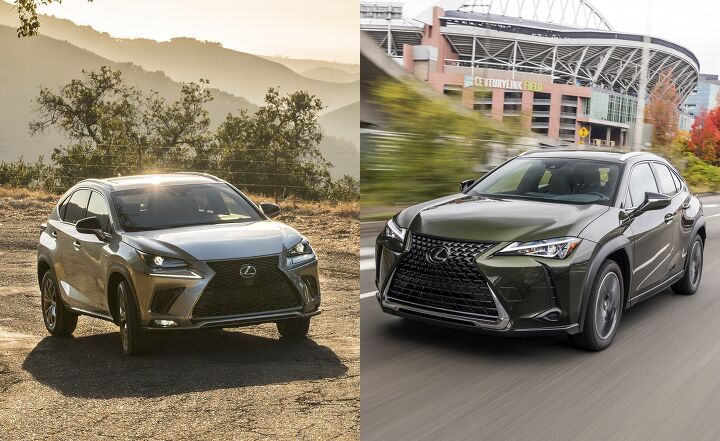


























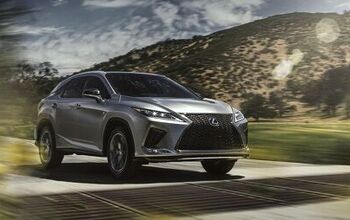

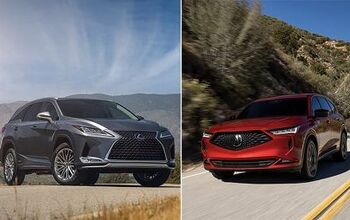


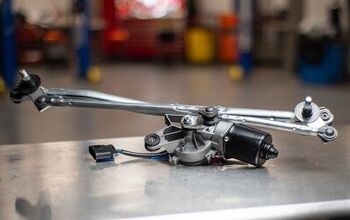


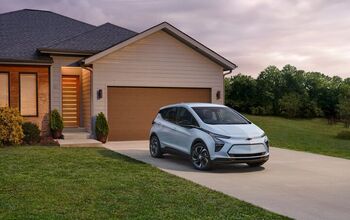



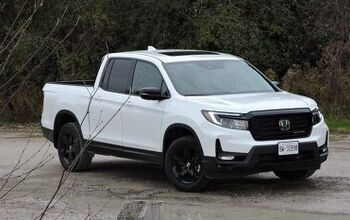

Comments
Join the conversation